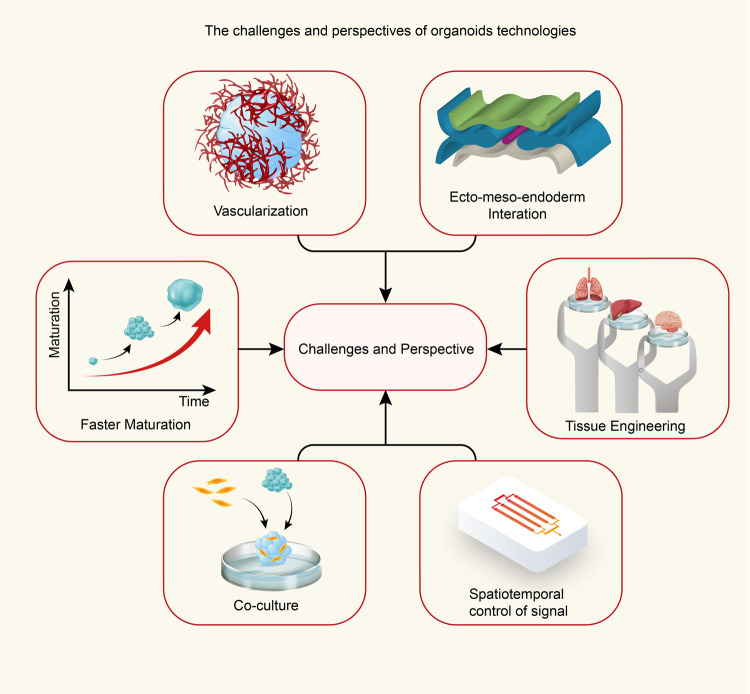Fig. 6.
Challenges and perspectives of organoid technologies. View of the challenges and perspectives of organoid technologies. Specifically, the sizes of the organoids developed to date have been limited due to the lack of vascular structures, but implementation of vascularization via coculture with endothelial cells could provide a near-physiological way to increase nutrient exchange. Slow maturation is another crucial factor limiting the disease modeling of later developmental stages, but pretreating organoids with small molecule compounds may be a solution to this hurdle. Moreover, establishment of ecto-, meso-, and endoderm tissue interactions during development may be a promising approach to improve recapitulation of the typical organ system interactions observed in vivo. Tissue engineering could control over the materials and the precise apportion of different cell types through kinds of biofabrication techniques, it is also a promising approach to using microfluidic platform in composite organoids. Coculture systems could offer the advantages of 3D organoid model systems to study functional and/or temporal and spatiotemporal interactions among diverse cell populations. Following the principles of organogenesis during the embryonic developmental stage, the regulation of cell differentiation in space and time can be directly controlled in vitro via implementation of concentration gradients and signaling centers of shape-guided morphogens

